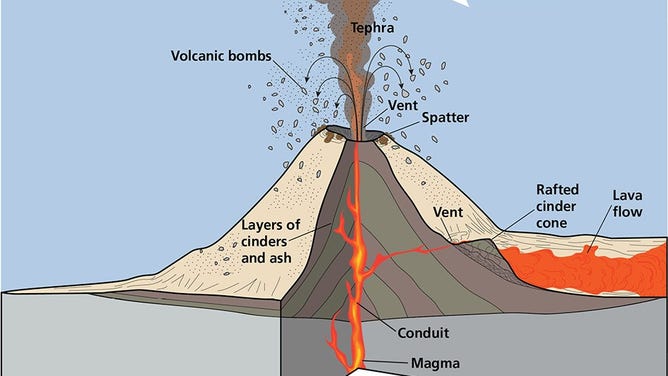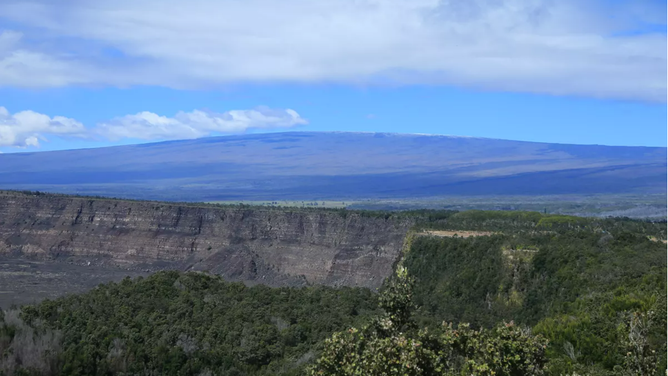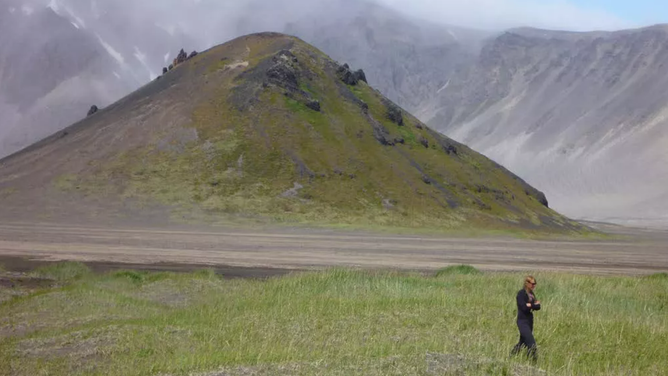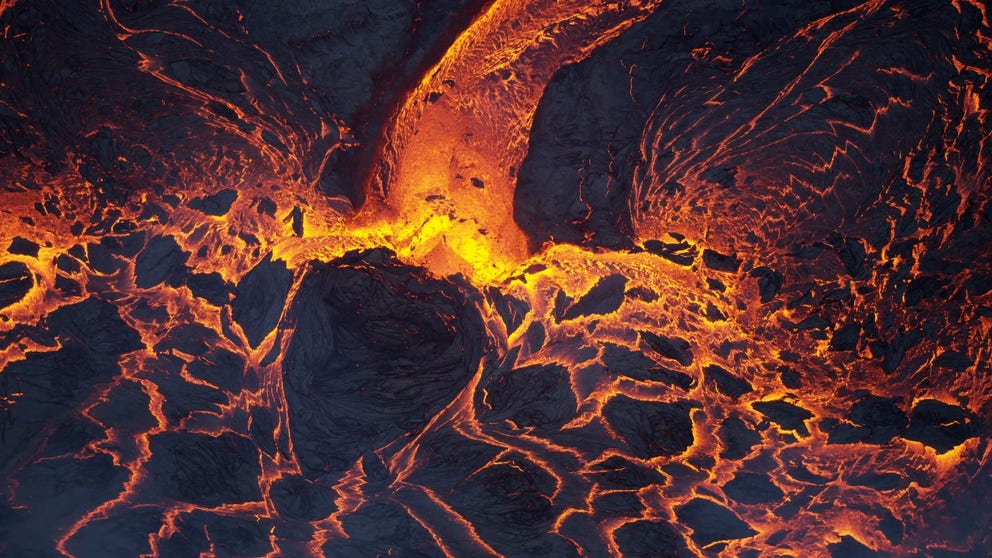4 classic types of volcanoes
Geologists consider Hawaii’s Mauna Loa to be a shield volcano and is the world's largest volcano. Volcanoes are considered to be active, dormant or extinct.
Watch lava flow in these mesmerizing volcanic eruptions around the world
Experience the power and majesty of a volcano up close in this awe-inspiring video.
The U.S. Geological Survey estimates there are 1,350 active volcanoes worldwide, with many centered along the Pacific’s Ring of Fire.
Each volcano is unique and can vary in size and composition, but geologists say a crucial aspect of these mountains is the amount of silicon dioxide present in the magma and rocks below the surface.
A high silica content can lead to violent eruptions that are categorized as explosive. Volcanologists say the silica makes magma prevents it from readily flowing.
Eruptions such as Alaska’s Novarupta in 1912 and Washington’s Mount St. Helens in 1980 all were composed of high amounts of silica.
When silica values are low, eruptions are categorized as effusive with magma that is thinner and tends to be less explosive.
WORLD'S LARGEST VOLCANO SHOWING SIGNS OF INCREASED ACTIVITY ON HAWAII'S BIG ISLAND
Generally, volcanoes around the Hawaiian Islands have low levels of silica, which means an explosive event is less likely, but that does not limit the dangers.
"Lava flows can be very large and fast-moving, which destroy everything in their path during an eruption. Gas can be released, which causes air pollution downwind, and damaging earthquakes can also occur. With those large earthquakes, they can also cause a local tsunami. So that there’s definitely a slew of hazards that can be associated with an eruption," said Katie Mulliken, a USGS geologist.
The USGS has developed the volcanic explosivity index (VEI) to quantify whether an eruption is considered small and non-explosive to apocalyptic, which has not occurred in recorded history.

Volcanic explosivity index (VEI)
(National Park Service)
The values are dependent on the amount of magma that erupts and the height of event.
Mt. St. Helens’ 1980 eruption received VEI score of a 5 and Hawaii’s Kilauea eruption of 2020 was determined to be 2.
MT. ST. HELENS’ ERUPTION: SURVIVORS RECOUNT THE ‘DARKER THAN MIDNIGHT’ FURY IN 1980
Here’s a breakdown of the four main types kinds of volcanoes that geologists monitor around the globe.
Cinder cones
Cinder cones are considered to be the most common and simplest type of volcano in the world.
Experts say their structures are typically small, so their footprint doesn’t cover much terrain.
Many are considered by volcanologists to be monogenetic and only erupt once during their lifespan.
Once a cinder cone volcano becomes dormant, it usually never erupts again.
A typical VEI value ranks as a 0-2 on the scale.
RECENT VOLCANO ERUPTION BENEATH PACIFIC OCEAN CONTINUES ‘SHARKCANO’ FAME

Cinder volcano diagram
(USGS/National Park Service)
Composite volcanoes
Composite volcanoes are some of the largest and the most picturesque of any mountain in the world.
Eruptions can be explosive and produce devastating impacts.
Unlike a cinder volcano, composite volcanoes are usually active over a period of thousands of years.
Mount St. Helens, Krakatoa, Mount Pinatubo and Hunga-Tonga-Hunga-Ha’apai are all considered to composite volcanoes, which also can be known as stratovolcanoes.
The last significant composite volcano eruption was Tonga in early 2022.
Watch: Tonga volcano spews ash one day before January 15 eruption
Dramatic new video shows massive plumes of ash rising from the Hunga Tonga-Hunga Ha’apai volcano one day before the major eruption. The eruption triggered tsunami warnings as far away as California.
The underwater volcano’s primary eruption in January sent a shockwaves around the world.
Experts categorized the eruption as a 5 on the VEI and likely would have been significantly worse if the volcano was not 500 feet below the surface Pacific Ocean.
WATCH A VOLCANO ERUPT OUTSIDE OF ICELAND’S CAPITAL
Shield volcanoes
This type of volcano is typically the largest on Earth and cover a broad swath of terrain.
Hawaii’s Mauna Loa and Kīlauea are classic examples of shield volcanoes and are among the most active in the world.
Mauna Loa, from the sea floor base to its top elevation, is more than 33,000 feet tall.

The broad shield of Mauna Loa in Hawaii.
(National Park Service)
Volcanologists say the great width of these volcanoes is a result of thin lava flows.
Eruptions are not considered to be eruptive and usually rank low on the VEI.
Threats from landslides and volcanic smog are usually significant with these types of volcanoes.
HOW THE MEGADROUGHT EXPOSED DANGERS OF DISTANT VOLCANOES
Lava domes
Lava dome features are usually quite small and due to thick magma, the lava doesn’t have wide impacts.
These types of volcanoes can be explosive and are frequently found in the craters of composite volcanoes.
Domes tend to grow from material that builds up over time by hardening lava from eruptions.
Experts say explosive eruptions can occur with little warning, which makes these features dangerous, if in the immediate area.

A person walking past a dome-shaped hill with a portion of the volcanic crater rim showing in the distance Vulcan Dome in Aniakchak National Monument.
(National Park Service/Tom Hunt)

